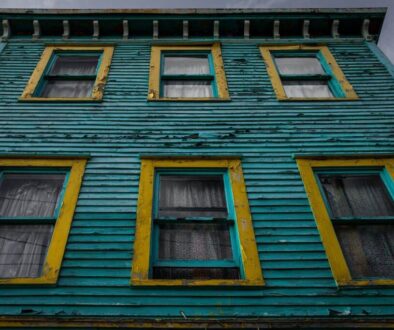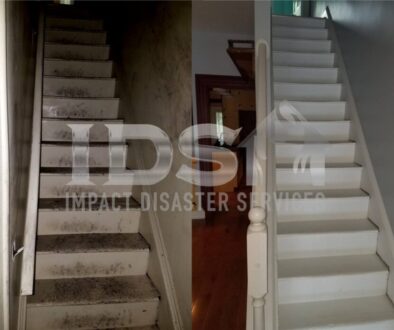Preventing Mold After Water Damage
Understanding Mold
Mold is a type of fungus that can grow almost anywhere there is moisture. It can be different colors like black, green, or white. Mold is not always bad; it helps break down dead materials outdoors. However, inside our homes, mold can be a problem. It can grow on walls, carpets, and even on our clothes if they are damp. When mold grows, it releases tiny particles called spores into the air. If we breathe in a lot of these spores, it can make us feel sick.
Mold needs moisture to grow. That’s why it often shows up after water damage in homes. It can start growing within 24 to 48 hours in wet conditions. This is why it’s important to keep our homes dry. If there’s a water leak or a flood, acting quickly is key to preventing mold.
Water Damage and Mold Growth
When your home has water damage, like after a flood or a big leak, it’s important to watch out for mold. Water damage creates the perfect wet environment that mold loves. Rooms like basements and bathrooms are especially at risk because they are often damp and don’t get a lot of fresh air.
If water gets into materials like wood, carpet, or drywall, these can stay wet for a long time. This is ideal for mold to start growing. In some cases, you might not even see the mold because it grows inside walls or under carpets. This hidden mold can still make the air in your house unhealthy.
It’s not just big floods that cause mold. Even a small leak under a sink can create enough dampness for mold to grow. That’s why it’s important to fix leaks quickly and keep your home dry. If you live in a place like Pennsylvania where it rains a lot, being careful about water in your home is even more important to stop mold.
Initial Cleanup
Right after water damage happens, starting cleanup quickly is very important. The first thing to do is to remove any water that’s still there. You can use a wet vacuum or mops for this. After removing the water, getting rid of things that are too wet to save is next. Some items, like soaked carpets or ruined furniture, might have to be thrown away to prevent mold.
Then, cleaning everything well is key. You can use soap and water for this. It’s important to clean the floors, walls, and any other places that got wet. This helps get rid of any dirt or bacteria that mold could grow on. Remember, mold can start growing quickly, so this cleaning step should be done as soon as possible after the water damage.
Once everything is clean, the next step is drying. Opening windows and using fans helps dry out the wet areas. Drying everything well means mold is less likely to grow. Even if things look dry, they might still be wet inside, like walls or floors, so using a dehumidifier can help.
Professional Mold Assessment
Sometimes, it’s hard to tell if mold is growing after water damage, especially if it’s inside walls or under floors. That’s where professional mold assessment comes in. Mold experts can check your home to see if there’s mold you can’t see. They use special tools to do this.
A mold professional will look at the places where water damage happened and test them for mold. They know exactly where to look and what signs of mold to watch for. They can also take air samples to check if there are mold spores in the air of your home. This helps find out if there’s hidden mold.
If the mold expert finds mold, they can tell you the best way to get rid of it. They can also help figure out why the mold grew. Maybe there’s still a little bit of dampness somewhere or a small leak. Fixing these problems helps stop mold from growing back. Having a professional mold assessment gives you peace of mind, knowing your home is safe from hidden mold.
Effective Drying
After cleaning up the water and dirt, drying out your home is one of the most important steps to stop mold from growing. This means getting rid of all the moisture that’s left after a flood or leak. Even when things look dry on the outside, they might still be wet inside. For example, walls and floors can hold moisture.
Using fans and dehumidifiers helps a lot in drying out your home. Fans move the air around, which helps dry things faster. Dehumidifiers pull moisture out of the air, which is really important in damp rooms like basements. In places like Pennsylvania, where it can get pretty humid, using a dehumidifier can make a big difference.
It’s also a good idea to keep your home warm while you are drying it. Warm air can hold more moisture, and when it’s moved around by fans, it can help dry things out more quickly. Just opening windows might not be enough, especially if it’s cold or rainy outside. Using heaters, along with fans and dehumidifiers, can help dry out your home faster and stop mold from growing.
Humidity Control
Controlling humidity in your home is another big part of preventing mold. Mold loves damp and humid places, so keeping the air in your home dry can stop mold from growing. This is really important in rooms that are naturally more humid, like bathrooms and kitchens.
A good way to control humidity is by using a dehumidifier. Dehumidifiers take extra moisture out of the air. This can help a lot, especially after water damage when your home might be more damp than usual. Using an air conditioner can also help because it cools the air and removes moisture at the same time.
It’s also important to use exhaust fans in your kitchen and bathroom. These fans help by pulling the humid air out of these rooms when you’re cooking or taking a shower. Keeping an eye on your home’s overall humidity level is good too. You can use a hygrometer, a tool that measures humidity, to check if the air in your home is getting too humid. Keeping the humidity level in your home between 30% and 50% is a good way to prevent mold.
Regular Inspection and Maintenance
Keeping your home mold-free after water damage isn’t just a one-time effort. It’s important to regularly check and maintain your home to prevent mold from coming back. Regular inspections can help you catch any new mold growth early. Look in places where mold likes to grow, like basements, bathrooms, and anywhere there’s been water damage before.
When you do these checks, look for any signs of water leaks or dampness. Fixing leaks right away is key to stopping mold. Also, keep an eye on areas that you’ve cleaned and dried before. Make sure they’re staying dry. If you see any wet spots or if a place smells musty, that might mean mold is growing.
Maintenance is also about keeping your home well-ventilated and dry. Make sure your bathroom and kitchen fans are working well. If you have a dehumidifier, clean it and check it regularly to make sure it’s working. These small steps can make a big difference in keeping your home healthy and free of mold.



